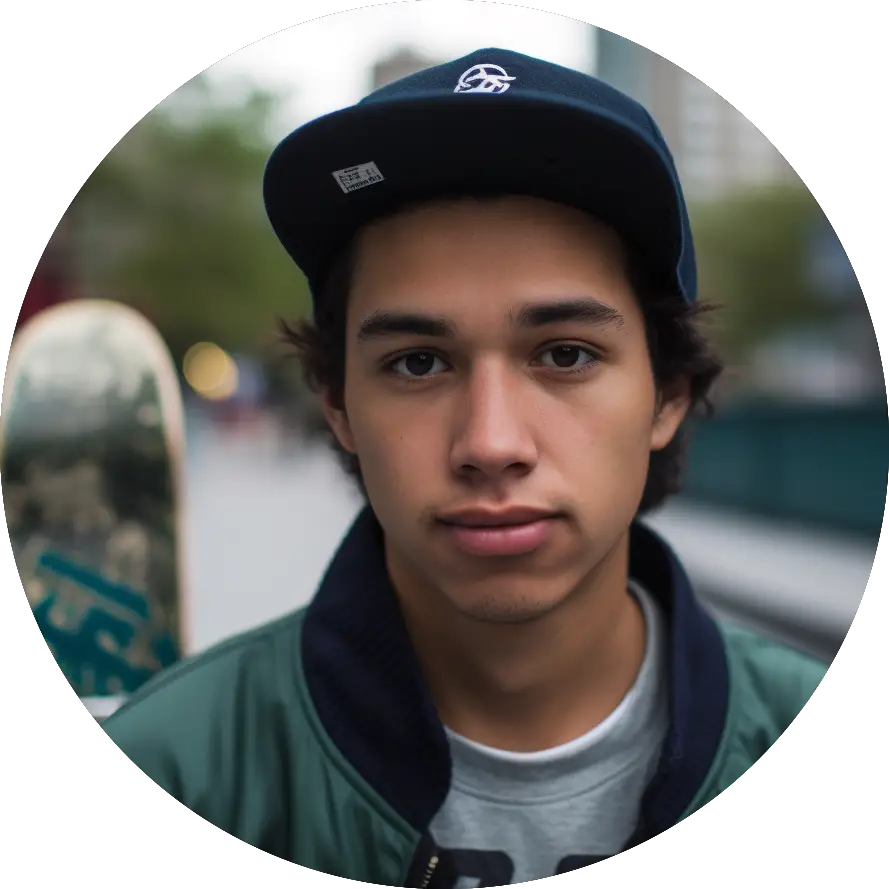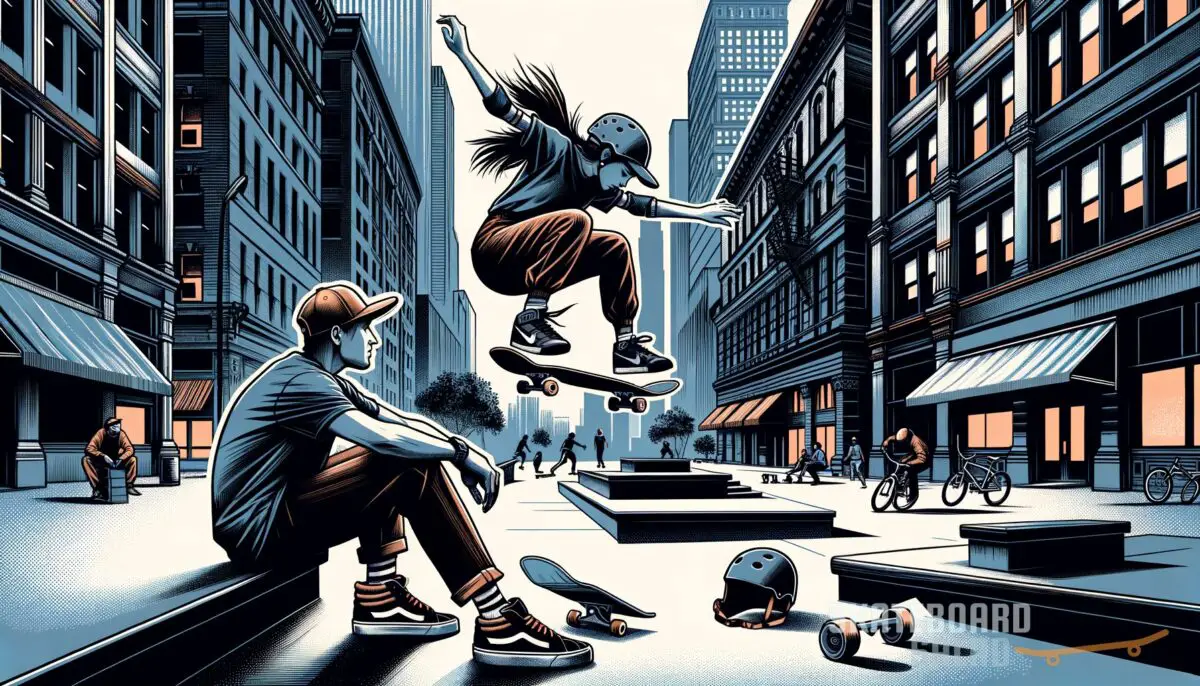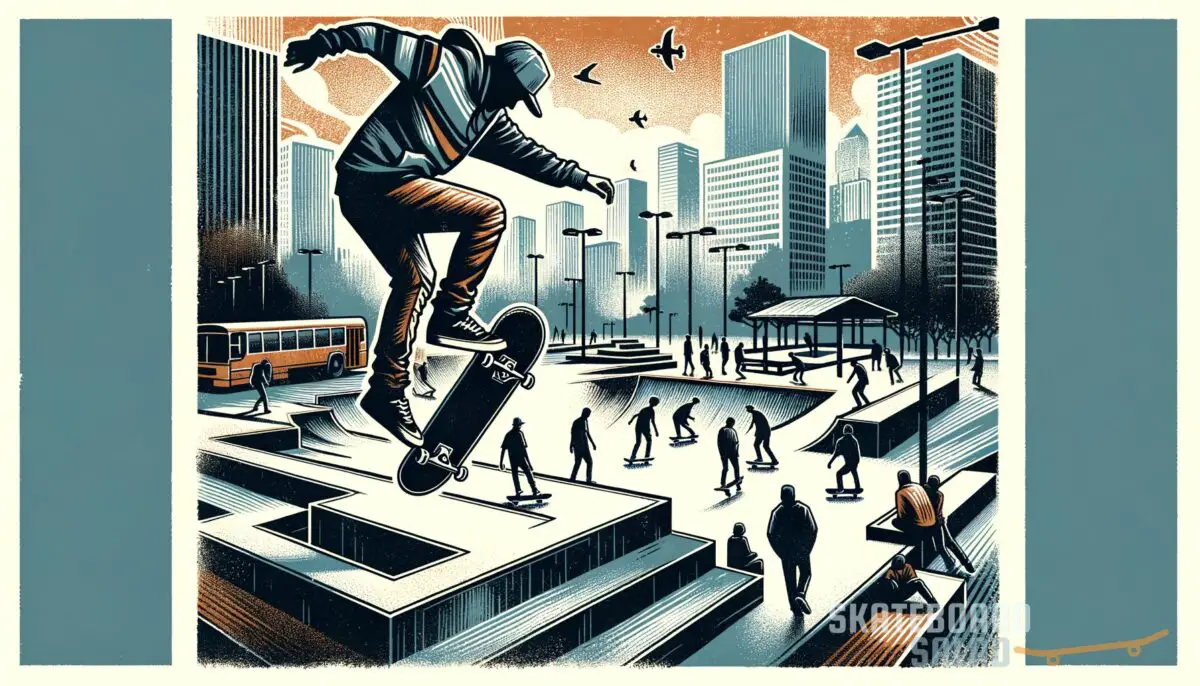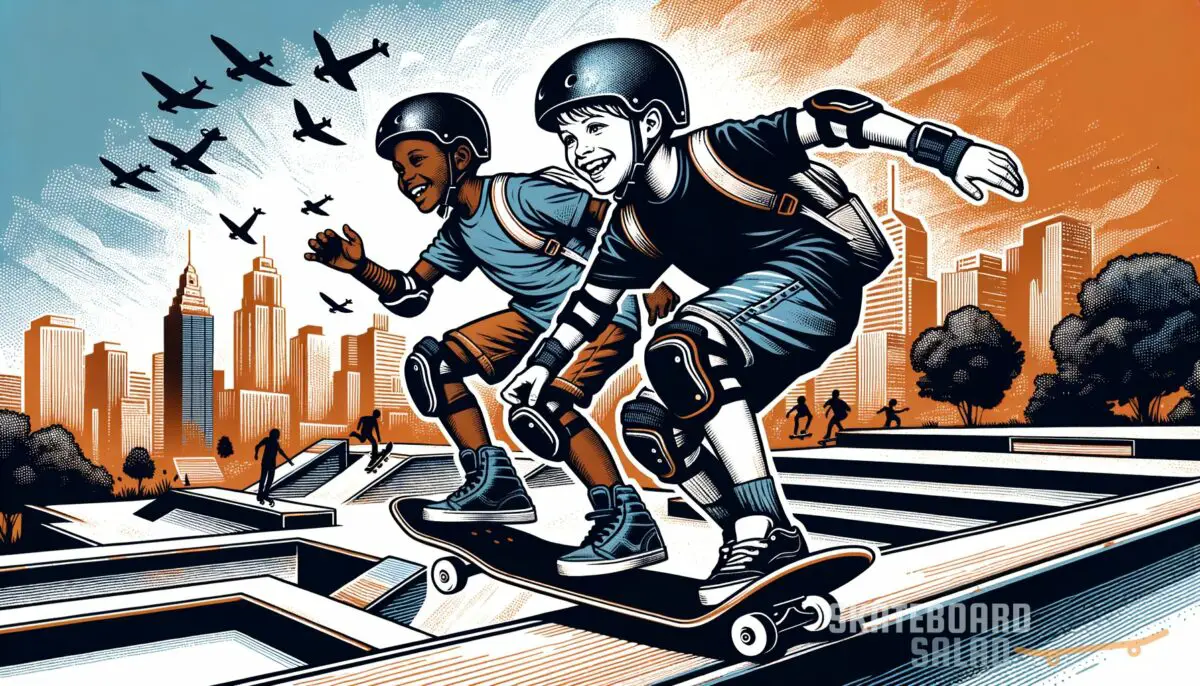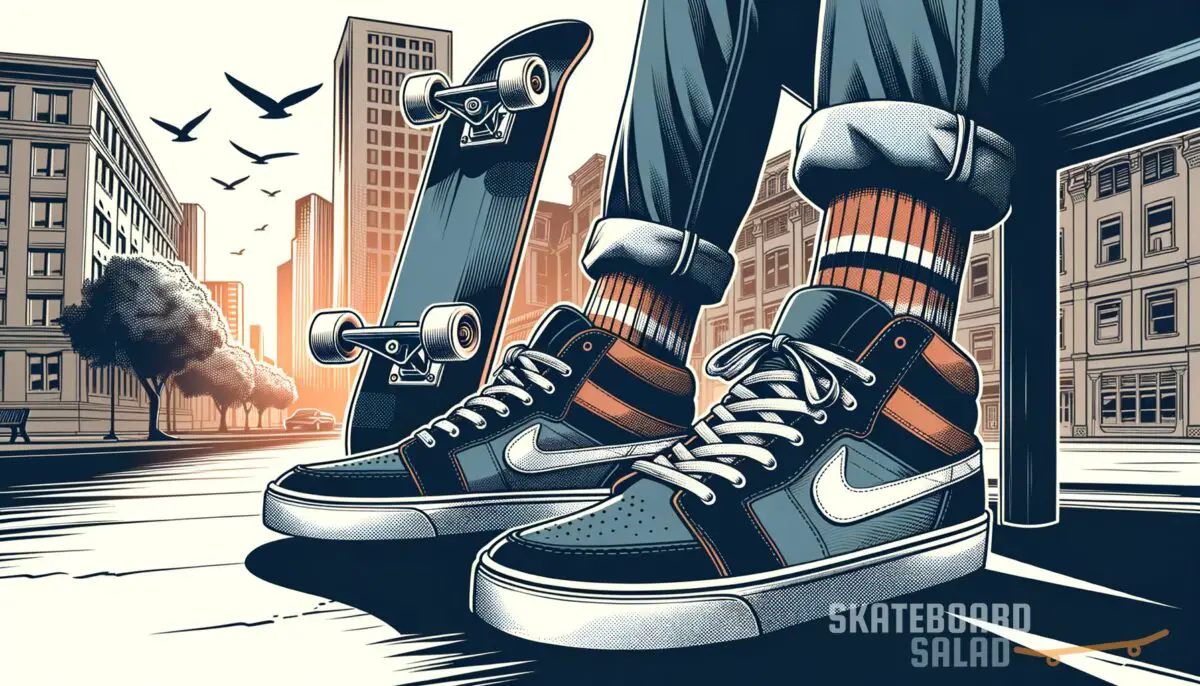Ever found yourself in the middle of a heated exchange about the intricacies of skate tricks? Trust me, knowing whether a heel flip or a kickflip is easier sparks some serious debate at the park. Is it easier to heelflip or kickflip? These Discussions usually hinge on personal experiences, but can the right board make a difference?
We’ll dive into the details to shred some light on this classic conundrum.
Key takeaways
- Foot placement is critical for both heelflips and kickflips.
- Visualizing and committing to the trick enhances the likelihood of success.
- Consistent practice builds muscle memory and refines skills.
- Proper skate gear can significantly impact your learning curve.
Is it easier to heelflip or kickflip?
When you’re sizing up a heelflip versus a kickflip, it’s like comparing apples to, well, slightly different apples. Both tricks involve flicking your board in a way that makes it spin beneath your feet while you’re in the air. It’s crucial to consider a few factors like your stance, foot position, and the way you flick the board.
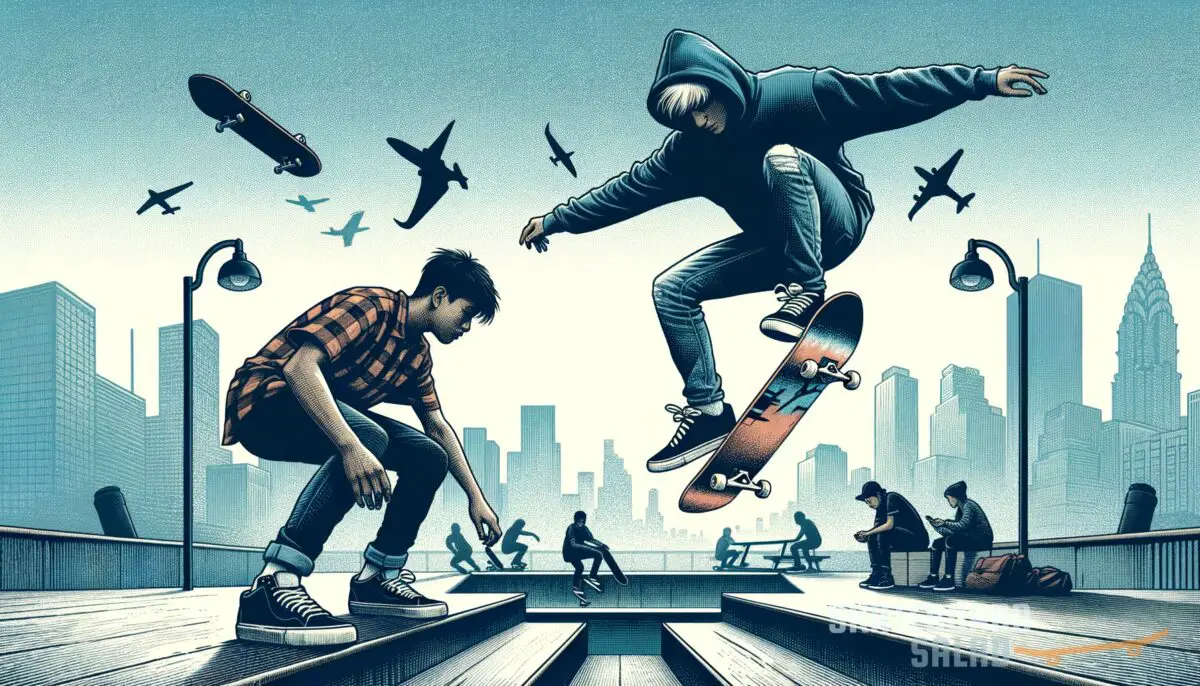
Let’s break it down:
Heelflips, for some, are more intuitive. Your front foot kicks towards the heel side of the board, which can be more comfortable if that’s your stronger flicking side. But here’s the thing: they can be tricky since they require a strong front foot motion and solid timing to get the board spinning right.
Kickflips, on the other hand, are pretty iconic in the skating world. They demand a flick off the foot’s edge, sending the board spinning along its axis. It’s the kind of move where precision counts and practice pays off.
Plus, the kickflip might just be your jam if you’ve got a great ollie as your foundation.
No two skaters are the same, and here’s where it gets personal:
- Some find the direction of the flip with heelflips to feel unnatural.
- Many prefer kickflips because they feel they have more control over the board.
Catch more details on these tricks by checking out the best skateboard decks for street skating.
“Maintain a centered and balanced stance. It’s all about the angle and timing. Incremental gains lead to big results—add a little height and a little distance each time.”
I’ll shoot straight from the hip here: I’m not a pro, but in my book, the kickflip reigns supreme. It wasn’t always smooth rides for me – I remember the time I totally bailed on a heelflip attempt right in front of some locals. My buddy said it looked like a scene out of “Skate or Die,” except less “skate” and more “why?” But that’s just my two cents – your mileage may vary.
As I bounced back from that ego-bruising slam, I mulled over the physics and finesse of skating. To me, the finesse in a kickflip feels more refined and controlled, though I’ve seen others make heelflips look like poetry in motion – it’s all about personal preference. If you’re thinking about gear that could tilt the odds in your favor, take a gander at some of the best skate shoes around – they could be the game-changer you need.
Enjoi Whitey Panda Complete Skateboard

Enjoi Whitey Panda Complete Skateboard
Mastering the flip: Heels or toes?
Once you get the hang of either trick, you’ll likely develop a preference based on your personal style. But before you choose your camp, it’s worth exploring some key subtleties and tactics in mastering these staples of street skating. If you’re fresh on the scene, make sure you’re geared up right—beginner’s luck doesn’t always cover you when you’re eyeing that slick concrete canvas.
Getting your footing down
In skateboarding, your foot placement is everything—it’s what makes skating an art. For a kickflip, position your front foot slightly towards the back of the board for that crucial flick on the edge. It’s all about the angle and timing.
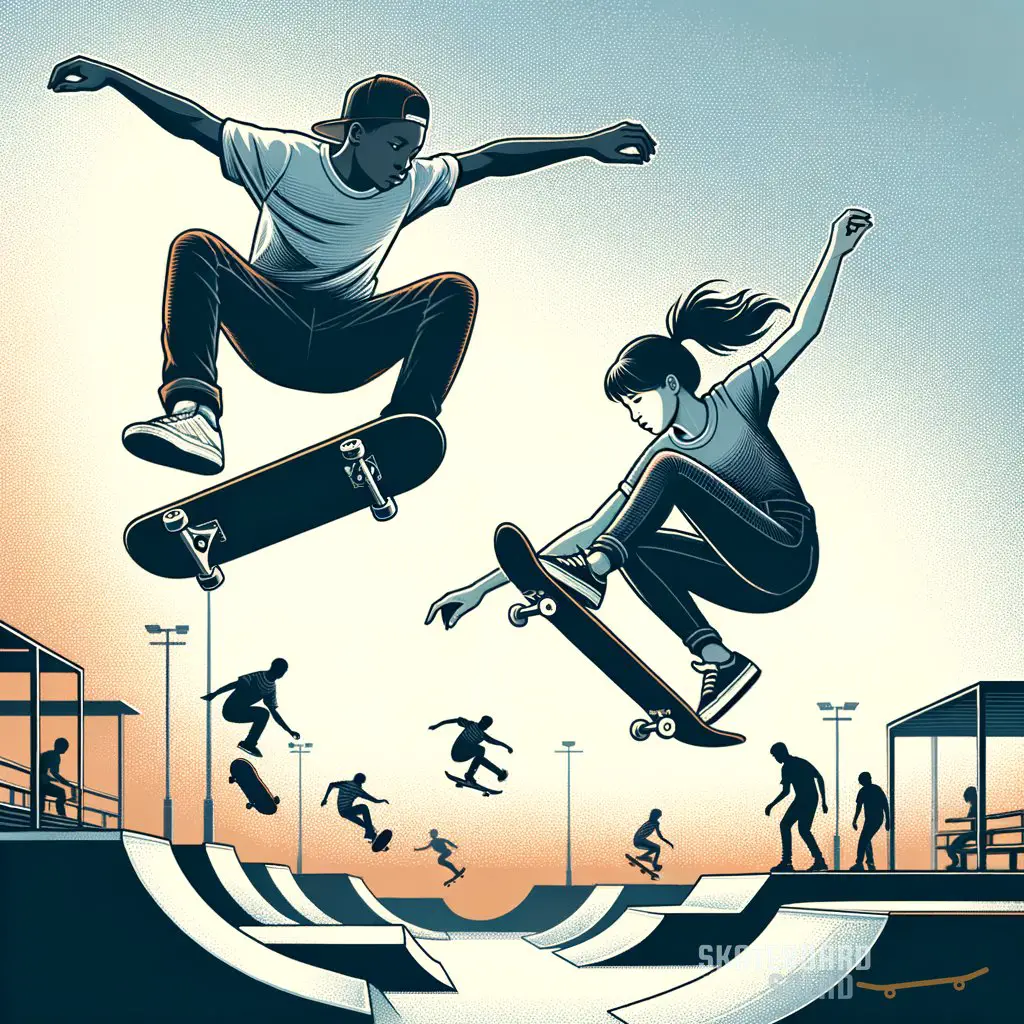
Meanwhile, heelflips demand a more diagonal foot placement, enabling a sharp heel kick that sends the board into a spin.
- Balance is key, focus on a centered stance
- Dial in your flick’s force – not too hard, not too soft
Smooth out your form with the right skateboard trucks, crucial for keeping your flips tight and your landings solid.
The mental game
When it comes to sticking heelflips versus kickflips, the challenge isn’t just physical—it’s a mind-bender. Visualizing your trick before you pop can be the make-or-break between soaring through the air or eating asphalt. Pump up your mental game and your confidence might just follow suit.
Imagine it, then do it; and sometimes, it’s as simple as committing to the flick and believing you’ll land it.
- Visualize success before each attempt
- Commit fully to avoid half-hearted attempts and injuries
Check out common skateboarding injuries to stay aware and prepared.
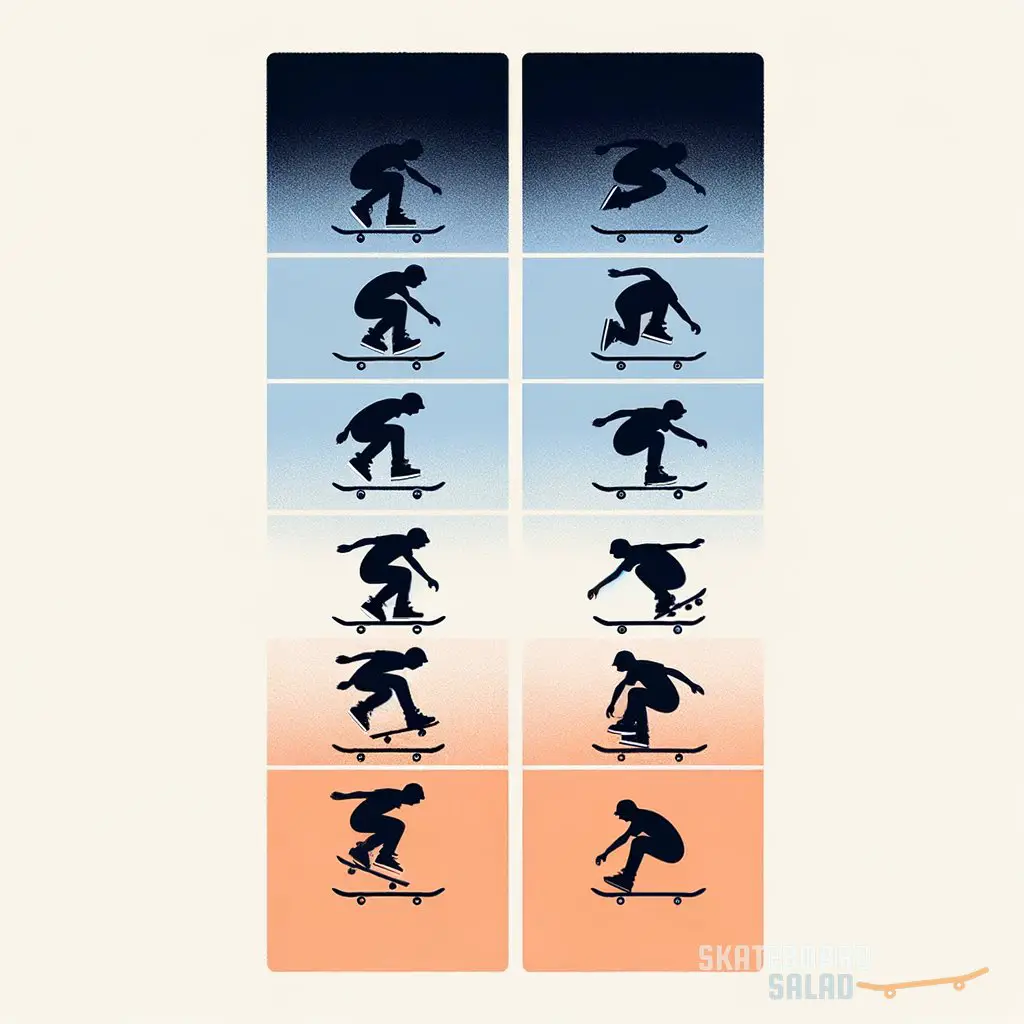
Practice makes perfect
Let’s cut to the chase: You need to skate… a lot. There’s no substitute for time on the board.
Repeat your heelflips and kickflips even when you think you’ve got them pat. That muscle memory won’t build itself and being consistent will get you the payoff. Incremental gains lead to big results—add a little height and a little distance each time.
- Rack up hours, it’ll pay off in skill
- Challenge yourself incrementally—progress is a ladder
Want to track your progress? Consider designing a custom skateboard that reflects your journey.
In the world of flips, there are some stats that just jump out at you. Take a look at this table which puts some meat on the bones of our flip conversation, showcasing the nuances between heelflips and kickflips. Use it to fuel your flip mastery or to win your next skatepark debate.
| Aspect | Heelflip | Kickflip |
|---|---|---|
| Foot Position | Diagonal kick | Back foot angled |
| Board Spin Axis | Heel side spin | Toe side spin |
| Commonality | Less common | More common |
| Easier to Learn | Varies by skater | Varies by skater |
| Key Technique | Heel flick | Toe flick |
Hitting the pavement with the right moves isn’t just about practice—it’s about smart practice. There’s a fine line between pushing the envelope and pushing your luck. Here’s a quick rundown of dos and don’ts that could be the difference between nailing that next trick and bailing into a faceplant.
| Do’s | Don’ts |
|---|---|
| Position your front foot correctly | Rush into the trick without preparation |
| Visualize the trick before attempting | Give up after a few failed attempts |
| Maintain a centered and balanced stance | Neglect your safety gear |
| Commit fully to the trick | Try tricks beyond your current skill level |
| Gradually increase the difficulty | Ignore your body’s warning signs of fatigue |
| Wear proper skate shoes for better grip | Use worn-out or inappropriate gear |
More skateboarding tips
As we veer into that skatepark sunset, let’s remember that fine-tuning your skateboarding skills goes beyond just heelflips and kickflips. Here’s a burst of extra pointers to keep you shredding smarter and harder:
- Always warm up with some stretching to keep the limbs limber
- Keep your skateboard in prime condition with regular check-ups
- Strategically analyze the spot where you’ll perform the trick
- Film your sessions to review your technique and progress
- Take breaks to avoid burnout and overuse injuries
- Skate with more experienced buddies to learn through observation
- Balance your skate sessions with other exercises to strengthen your body overall
- Stay hydrated and snack on energy-boosting foods when you’re out for a long session
- Stick to a routine to build consistency but also mix things up to keep it fresh
- Focus on fun; remember why you started skating in the first place
Whether you’re at the skatepark working on your tricks or just cruising through your neighborhood, these more tips could be the secret sauce to your skateboarding success. Happy shredding!
If you are a visual learner, check out this video titled ‘HOW TO HEELFLIP’
Frequently asked questions (FAQ)
How long does it typically take to learn a heelflip or kickflip?
It’s a mixed bag really. Some skaters get it down in a few weeks, while others labor for months. It hinges on how usually you practice, your natural affinity for the trick, and whether you’ve got a rock-solid ollie as your base.
Stick with it, track your progress, and remember, it’s about quality reps, not just quantity.
Can shoe choice impact the ease of learning flips?
Absolutely. Shoes play a big role in skateboarding. A good pair of skate shoes provides the grip and board feel necessary for pulling off tricks like heelflips and kickflips.
They can offer the support and protection your feet need during the learning process. Choose wisely to enhance your performance and safety.
Are there any exercises to improve flick strength for flips?
For sure. Flick strength is crucial. Try exercises that boost your ankle strength and stability, like toe raises or balance training on a wobble board.
Flexibility exercises for your feet and ankles can also help. The more limber and powerful your flick, the snappier your flips will be. Keep up the physical prep and it’ll pay dividends on the board.
Final thoughts
As our deep dive into the heelflip versus kickflip quandary wraps up, it’s clear that personal preference, perseverance, and proper practice play pivotal roles in mastering these tricks. Whether you favor one over the other, or decide to tackle both, respect the process and the journey that each trick offers. Stay stoked, stay committed, and most importantly, enjoy every flip and flop along the way.
How long did it take you to lock down your kickflips or heelflips? Did I cover everything you wanted to know? Let me know in the comments section belowI read and reply to every comment. If you found this article helpful, share it with a friend, and check out my full blog for more tips and tricks on mastering your board. Thanks for reading and keep shredding those streets!

